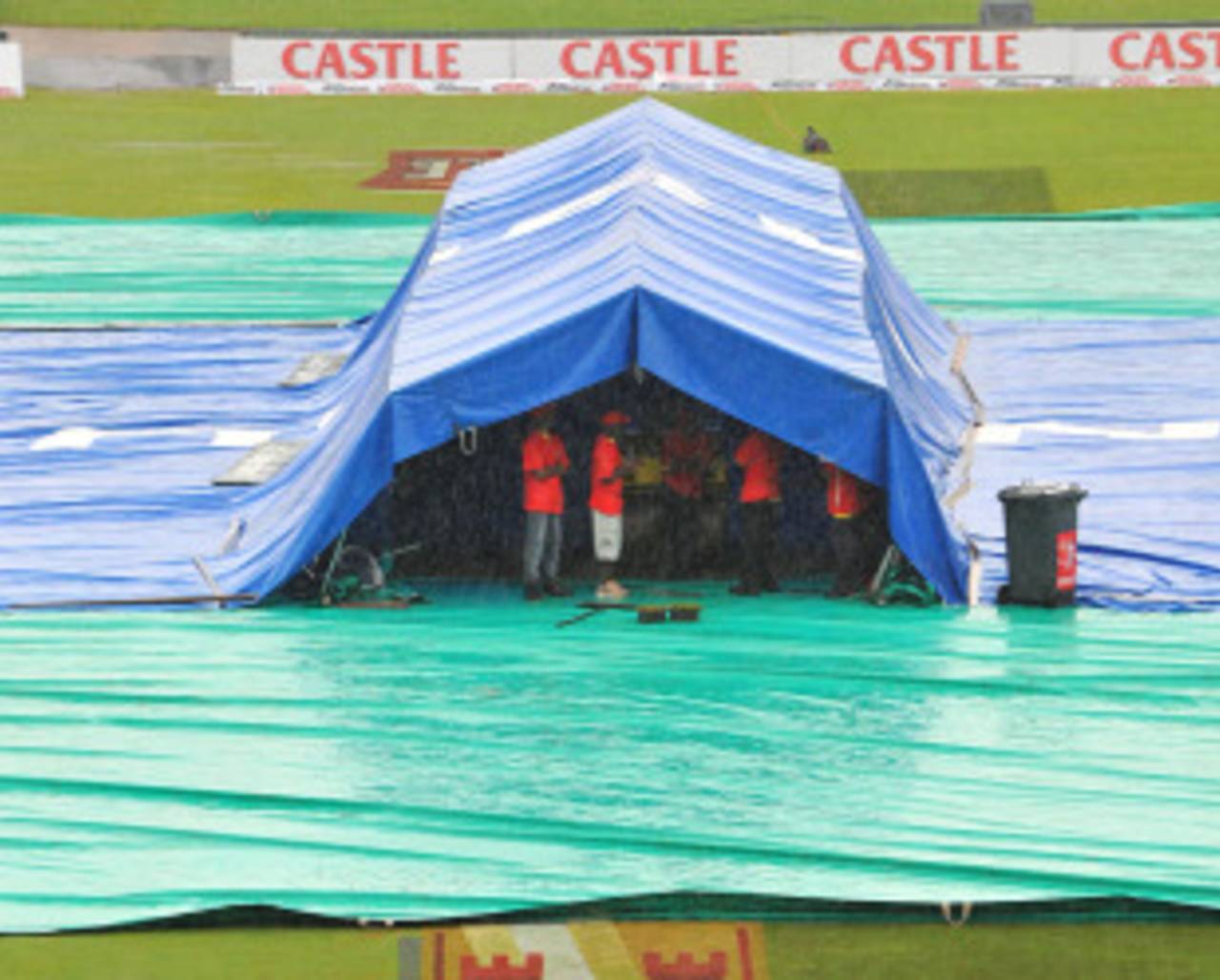A tent against the torrent
With a state-of-the-art drainage system, a 12-foot-high tent protecting the pitch and groundsmen working hard day and night, Supersport Park in Centurion has all the resources at its disposal to negotiate a rain threat
Sidharth Monga in Centurion
11-Dec-2013

SuperSport Park has successfully dealt with rain threats in the past • Getty Images
Empty cricket grounds are wonderful places to be in, especially a day before a big match. When the seats are being cleaned for magic to be made the next day. When the mind is free to relive past deeds of enchantment, of heroism, of guile, of close matches. When electricity flows through the stands and empty grass stands. When you can imagine future scenarios. When you can watch some of the most unsung heroes of cricket going about their work.
It has been raining persistently since last evening in Centurion, it is cold and miserable, but there are men in trenchcoats and gumboots trying to erect a temporary structure over the covered pitch. Different groundsmen over the world have come up with different home-grown methods to fight weather. Sri Lankan groundsmen cover the whole field when it rains. Inmates in the nearby prisons are employed to do the work. The groundsmen get labour and the inmates fresh air to breathe. Some in Australian grounds know their weather so well they rush out onto the field even before it starts raining. Some players leave flummoxed, but soon realise - as massive rain falls - a lot of time has been saved by this proactive covering of the field. Some Indian grounds have used helicopters to dry the surface. Glue was once used to keep powdery surfaces together in India.
Here in Centurion, you have the tent erected over the pitch. It is a master move for days like this when the showers are not short and sharp, but persistent and slow. The excellent drainage takes care of the outfield, but such rain doesn't give you time to prepare the pitch, the rolling, shaving and what-have-you. The metal structure takes about an hour to erect, after which the groundstaff pulls over one of the ground covers over it to make the tent. They don't use professional ready-made tents because they can't take so much rain.
It looks like a camping tent, only it is about 12 feet high and 25 yards long. Once this shelter has been created, the groundsmen use their cart's headlight to make it bright inside, take their rollers, roll the pitch, and do all their gardening without the pitch getting wet. Rudolph du Preez, a groundsman here, says they came up with the idea before the 2003 World Cup when all the groundsmen sat together and pondered about the possibility of continuous rain. "It is okay if the outfield is wet because of the rain," du Preez says. "But it can be embarrassing if it stops raining on the day of the match and the pitch is not ready."
The last time India were here for a Test, everything that could fall from the sky fell. The roads were flooding, the parking lots submerged, and water in the outfield came almost halfway up to the advertising hoardings. There was no way we were having cricket. Except that at tea, play started, and India were 136 for 9 at stumps. This was all thanks to the Shelton Drainage System, which pushes the water to the edges through rings that are not visible from afar.
Because the pitch has taken a lot of moisture, they are now "baking" the pitch inside the tent using industrial space heaters. It looks like a cave from the outside. The only things keeping them from looking like miners are the absence of those helmets with lights. It is about 8pm, everybody has left, but these men in trenchcoats, who will not be seen tomorrow, are still working hard. They know they need to keep the pitch ready because the outfield can be dried fast once it stops raining.
All the hard work has paid off. Wednesday morning has brought warm sunshine. Rest assured the pitch will be ready by the time the outfield is drained.
Sidharth Monga is an assistant editor at ESPNcricinfo